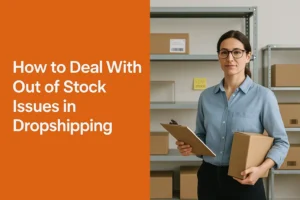If you’re serious about dropshipping, you know the difference between profit and failure often comes down to one thing: product choice. Picking the right item can set you on the path to consistent sales, while the wrong one can drain your time and money.
That’s why knowing how to analyze AliExpress products before selling is one of the most valuable skills you can build as a dropshipper. Instead of gambling on random items, you’ll have a clear strategy for finding reliable suppliers, tracking demand, and ensuring quality.
Why Product Analysis Matters
Before selling a single item, you need to understand the risks of skipping proper research. AliExpress has millions of products, but not all of them are worth your effort. Some have low demand, others come from unreliable suppliers, and many carry razor-thin profit margins.
By applying structured AliExpress product research, you protect yourself from wasting ad spend on items that customers won’t buy or will return. More importantly, it gives you a system you can repeat for every niche you test.
Reduces Risk of Dead Products
Without research, you might pick an item with no proven demand. Analyzing sales trends and order volumes helps avoid products that simply don’t move.
Ensures Supplier Reliability
Suppliers vary widely. Looking at ratings, fulfillment speed, and communication style ensures you’re working with partners who can deliver consistently.
Maximizes Profit Potential
Some products look appealing but leave no room for profit after fees and shipping. Running a quick profit margin analysis ensures you’re not selling at a loss.
Key Factors to Check Before Selling
There’s no single secret formula for finding winning products, but combining several checks gives you a strong picture. Let’s break down the most important factors to analyze on AliExpress.
1. Product Demand Check
Always look at order volume tracking. A product with thousands of orders usually signals demand. But don’t just chase numbers – confirm that recent orders are steady, not just spikes from months ago.
2. Customer Reviews and Ratings
A reliable product quality check comes from real customer reviews. Look for ratings above 4.5 and detailed reviews with photos. If buyers consistently mention poor packaging or defective items, avoid it.
3. Supplier Reliability
Check the supplier score. AliExpress shows ratings on shipping speed, communication, and item accuracy. Stick with sellers that have at least 90% positive feedback and years of activity, not new accounts.
4. Shipping Time Analysis
Long delivery times kill conversions. Review available shipping methods. Suppliers offering ePacket or faster logistics are better. If you target the U.S. or Europe, see if warehouses exist locally to speed up fulfillment.
5. Profit Margin Analysis
Calculate the cost of the product, shipping, transaction fees, and ad spend. Then compare it to the expected selling price in your store. If your profit margin is below 20%, consider alternatives.
Tools and Strategies for Smarter Research
Manual checking works for a few products, but if you want to scale, you need smarter tools. This is where AliExpress analytics tools and sourcing strategies save hours of work.
Sales Trends and Product Validation
Use tools that track market competition and highlight trending products. This helps validate your ideas before you invest in ads. When you see demand rising over weeks, it’s a strong sign to test.
Niche Selection Strategy
Instead of selling what everyone else is pushing, target underserved niches. Look for specific keywords, unique variations, or seasonal demand. Smaller niches often mean lower competition and higher conversion rates.
Product Sourcing Efficiency
Your product sourcing strategy should combine both data and intuition. Check supplier catalogs for hidden gems, but only after verifying demand and reliability.
How to Apply These Checks in Real Life
Let’s put it together with an example. Imagine you’re considering selling a grain-free dog food bowl.
First, check order volume to confirm buyers are already interested. Next, scan reviews for comments on material quality. Then look at the supplier’s shipping times to see if they can reach your target market fast. Finally, run the numbers to calculate if there’s enough profit after shipping and ad spend.
By the end of this process, you’ll know if the product is a smart bet or one to skip. That’s how structured dropshipping product analysis gives you confidence in your choices.
Common Mistakes to Avoid
Even with a checklist, many beginners fall into traps when analyzing products.
Ignoring Recent Trends
A product that was hot last year may not sell today. Always check recent sales trends, not just lifetime numbers.
Chasing Low Prices Only
Cheap doesn’t mean profitable. Factor in shipping and ads. A slightly higher-priced product with faster delivery often wins.
Trusting One Supplier Too Much
Never depend on a single supplier for your best-sellers. Always have backup options in case stock runs out or policies change.
FAQs
- How do I know if a product is a winning product on AliExpress?
Check order volume, customer reviews, and sales trends. A product that shows consistent demand, positive ratings, and reliable suppliers is usually worth testing. - Should I only sell products with thousands of orders?
Not always. Products with moderate order volume but growing trends can be future winners. Look for upward movement rather than only big numbers. - How can I check if a supplier is trustworthy?
Review their feedback score, years in business, and fulfillment speed. Communicate with them directly to test responsiveness before relying on them. - What role does shipping time play in dropshipping success?
Fast shipping builds trust and improves customer satisfaction. Products with shorter delivery times reduce complaints, refunds, and negative reviews. - Which tools help with AliExpress product research?
Use analytics tools that track sales trends, supplier ratings, and product margins. They save time and give deeper insights into product performance.
Conclusion
Analyzing AliExpress products before selling isn’t optional – it’s the backbone of building a sustainable dropshipping business. By combining demand checks, supplier vetting, margin calculations, and trend analysis, you can avoid costly mistakes and focus on items that actually sell.
Final Step: How We Help You Grow
At AeroDrop, we designed our platform to make this entire process faster and easier. Instead of manually checking every detail, AeroDrop gives you:
- Handpicked winning products from trusted suppliers, already validated for quality and demand.
- One-click import to Shopify with product descriptions, images, and pricing ready to go.
- Real-time fulfillment tracking so you never worry about lost or delayed shipments.
- Custom branding options like packaging and niche product sourcing to help your store stand out.
- Performance insights showing which products earn the most so you can scale quickly.
By using AeroDrop, you don’t just guess – you get a complete system to streamline, sell, and scale your online store with confidence.







